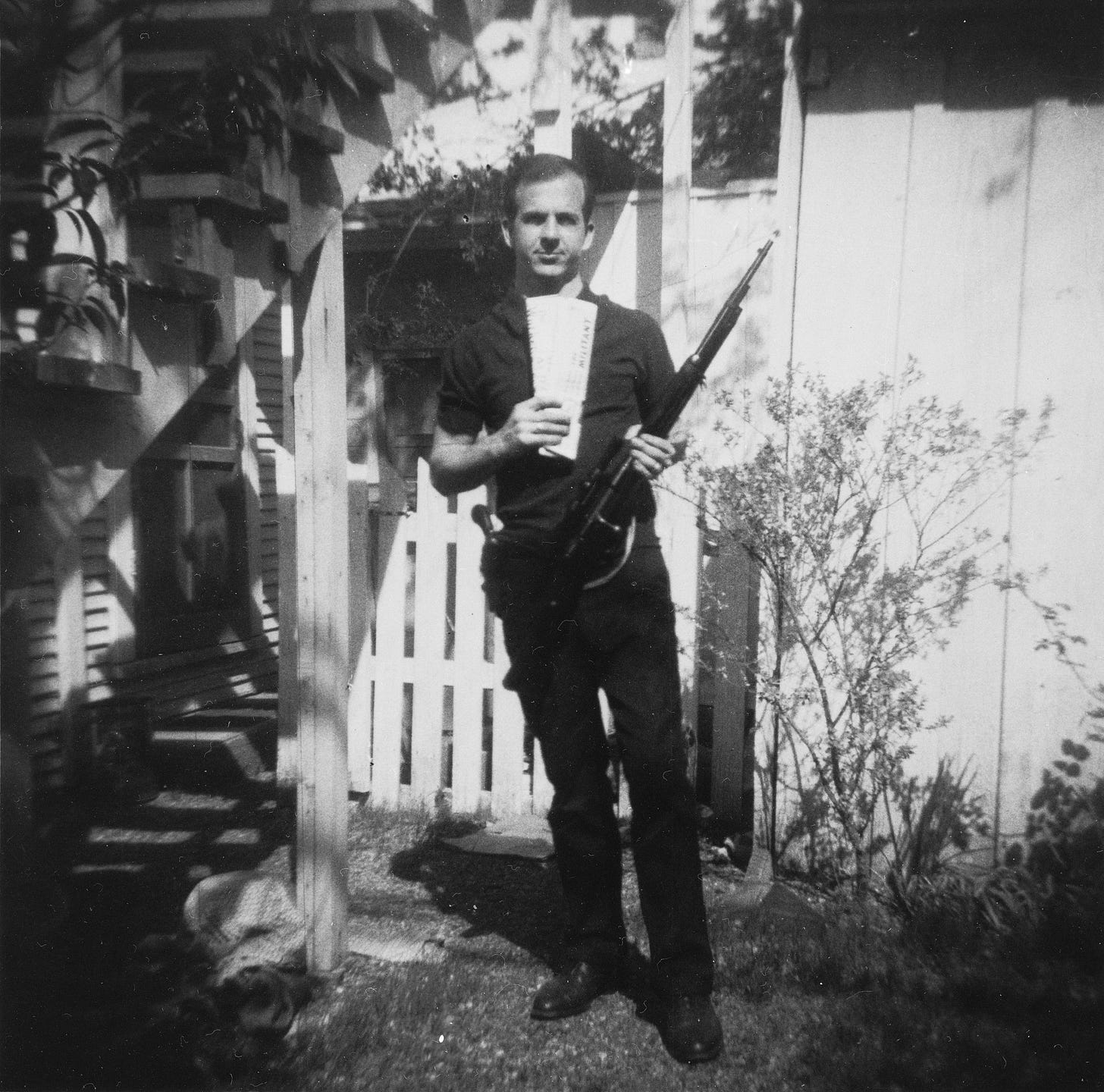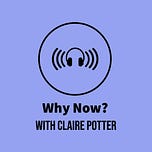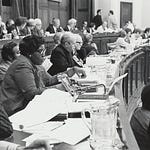
We had a feedback issue on this recording. We managed to eliminate most of it, but if you hear a squeak, or a bit of distortion, that’s us—not your equipment. More importantly, the show is about gun violence. If this is a trigger, you may want to skip this episode.
Before September 11, 2001, the cultural moment that everyone my age and older had in common—the sharing of confidences that begins with the phrase “Where were you when….” was the assassination of President John F. Kennedy. On November 22, 1963, I was five. My mother had picked me up at nursery school and taken me into town to the Reading Terminal Market in South Philadelphia. This is where we were when, thousands of miles away in Dealey Plaza, a central thoroughfare in Dallas, Texas, a 21-year-old drifter named Lee Harvey Oswald fired three shots. Two hit the president, and one wounded Texas Governor John Connally.
Today, the news would have been tweeted instantly, but back then it took ten minutes or so for it to be reported out, as beat reporters pushed each other out of the way at pay telephones. Most famously, CBS News’s Walter Cronkiteinterrupted the popular soap opera, As the World Turns, to break the story.
My mother, and everyone else line at one of the Italian stalls that sold meat, fish, and fresh vegetables, heard the news on a radio playing behind the counter. I remember only a churn of women’s legs around me—remember, I was five, and was as tall as the average hemline—and my mother seizing my hand and running to the door. “We have to go home,” she said. “The President has been shot.”
We got into her big yellow Mercury and started our drive to the suburbs with the radio on. I wasn’t really listening, but what I remember was this: my mother pulled to the side of the road and began to cry. I looked through the windshield (yes, children sat in the front seat then) and one after another, cars were pulling onto the shoulder.
Afternoon television audiences still watching As The World Turns, saw Cronkite return to their screen, choking back tears, to tell them that the President was dead.
At 2:38 p.m., Air Force One took off with First Lady Jacquelyn Kennedy on board and JFK’s body in the hold on its way to an autopsy at Bethesda Naval Hospital. In mid-air Vice President Lyndon Baines Johnson took the oath of office as the 36th president of the United States. A few hours later, the assassin—a little-known figure named Lee Harvey Oswald--was captured in a Dallas movie theater, after killing again, this time patrolman J.D. Tippit. Oswald was a former Marine, defector to Russia, and briefly, a streetcorner activist with the Fair Play for Cuba Committee. Needless to say, initial speculation was that he was a foreign agent striking a blow against the leader of the free world.
That turned out to be wrong. Furthermore, in a brief appearance before a swarm of reporters outside the Dallas Police Department headquarters, Oswald insisted that he didn’t do it.
Of course, since he was a child, Oswald had never accepted responsibility for any of his misdeeds. We’ll get to that—but to say the least, his public disavowal of the crime that day complicated things—forever.
Had there been a trial, and Oswald proven to be the lone gunman, perhaps what became the foundational conspiracy theory in modern political history would never have been born. But on November 24, the day before President Kennedy’s funeral, that conspiracy theory gathered strength. Like millions of other Americans, I watched wide-eyed as a handcuffed Oswald was himself murdered in the basement of the Dallas Police Department by a nightclub owner Jack Ruby linked to the Mafia.
These events were a turning point in American life. Although Presidents had been assassinated before, I was born into an America where gun violence didn’t suddenly erupt in public places. By the end of the decade, that was no longer true. A few months before Kennedy was shot, civil rights organizer Medgar Evers had been gunned down in his own driveway by Mississippi Klansman Byron de la Beckwith. On April 4, 1968, Martin Luther King, Jr., was killed by James Earl Ray, and on June 6, 1968, Robert F. Kennedy, JFK’s brother, was shot by a lone gunman after winning the California presidential primary.
Yet it was John F. Kennedy, the first of what became an American political dynasty, whose death became shrouded in speculation and conspiracy-mongering. In the 60 years that have since passed, the pieces of this puzzle--the Soviet Union, the improbability of the shots Oswald took from his post in the Texas Book Depository, Communist Cuba, and Jack Ruby’s mob ties have been moved around the board by experts, journalists, and hobbyists, many seeking to displace Oswald from the center of the story.
And as we know from a new book by journalist Deanne Stillman, American Confidential: Uncovering the Bizarre Story of Lee Harvey Oswald and His Mother(New York: Melville House, 2023), there was someone else competing for the spotlight all along. That was Lee’s mother, Marguerite Oswald.
Marguerite’s response was surprising, to say the least. She showed no regret, or remorse, for the President’s death, and emphasized that she knew that her Lee didn’t do it. Why? Because he said he didn’t do it. And if the federal government had been doing its job properly that day, she scolded, they would know that too because Lee would have been under surveillance when Kennedy was in Dallas.
If you knew the Oswalds, it was predictable. Marguerite had always excused Lee’s violence—it was always someone else’s fault.
It’s also no accident that Marguerite treated the assassination, and her son’s murder, as an opportunity to promote herself. Both she and Lee had always craved the spotlight, the success and fame that they believed were rightly theirs, sometimes even competing with each other. And now that Lee was infamous in his own right, Marguerite, who had always been poor used his crime to make bank and take her own place in history. She sold her son’s belongings, offered exclusive interviews like the one we just listened to for pay, and by 1965, could be found in Dealey Plaza, selling copies of Aftermath of an Execution: The Burial and Final Rites of Lee Harvey Oswald As Told By His Mother (Dallas: Challenge Press, 1965.) In 2020, first edition of this volume, with a tipped-in Christmas card from Marguerite, was sold at auction in Wilton, Connecticut for $1500.
But Stillman doesn’t want us to blame the Kennedy assassination on bad mothering, although there is plenty of that in the Oswald story, but on how this strange dyad, Lee, and Marguerite, drove their desire for fame and their story forward together to that fateful moment on November 22, 1963. And she raises important questions, not just about Oswald’s iconic status as an assassin, but his historical position as a model for the shooters we know today who kill people often unknown to them: lone wolf gunman, enmeshed in fantastical fantasies about themselves, usually mentally ill, who buy guns and mount GoPro cameras on their chests as they seek one, brief moment of fame and glory.
We live in the world Lee Harvey and Marguerite Oswald made.
For 20% off the purchase price of American Confidential through November 17, 2023, click the button below and use our special reader discount code:
Show notes:
The clip from television reporter Frank Kracher is from the archive of WLOS News, Asheville, North Carolina.
Marguerite Kennedy’s interview from December 6, 1963, the first of many she would do, can be found here.
There are many excellent books about Louisiana Governor Huey Long: one of the best is Alan Brinkley, Voices of Protest: Huey Long, Father Coughlin, & the Great Depression (Vintage Books, 1982.)
Claire mentions Don DeLillo’s novel about Oswald, Libra (Viking, 1988); Deanne added Norman Mailer’s Oswald’s Tale: An American Mystery (Random House, 1995) to the mix.
Deanne makes a connection between the Oswald family’s unfulfilled desires and the Tennessee Williams play, Streetcar Named Desire (New Directions, 2004; orig. 1947.)
Claire and Deanne discuss the long history of presidential assassination, and Deanne mentions the “ghosts” of past assassins tht are always present, referensing Stephen Sondheim’s Assassins (Theatre Communications Group, 1993.)
Deanne notes that Travis Bickle, the shooter in Martin Scorsese’s Taxi Driver (1976) is Oswald’s fictional cultural descendent.
You can read a contemporary account, and reflection on, Oswald’s years in Russia in The New York Times archives.
In discussing Lee Harvey and Marguerite Oswald’s potential as contemporary reality show contestants, Deanne mentions Here Comes Honey Boo-Boo (2012-2017), and the surprising number of reality show contestants who subsequently have troubled lives.
Deanne discusses the marketability of Kennedy assassination memorabilia: the holidays are coming, and you can get some on Etsy.
I mention the revival of the “second shooter” theory in my postscript: you can read about a new documentary on Paramount+ that reopens a belief long held by some Kennedy assassination enthusiasts here.
You can download this podcast here or subscribe for free on Apple iTunes, Spotify, Google Podcasts, or Soundcloud. And if you liked this episode, please join us at Political Junkie!
If you liked this episode, why not try:
Episode 38, The Adventures Of A Very Amateur Historian: A conversation with historical novelist Allison Epstein about her new book about Imperial Russia, "Let the Dead Bury the Dead"
Episode 35, No Age of Innocence: A conversation with historian Drew Faust about fighting back, making change, and her new memoir, "Necessary Trouble: Growing Up at Midcentury"
Episode 28, Terrorism Begins At Home: A conversation with legal journalist Jeffrey Toobin about his new book, "Homegrown: Timothy McVeigh and the Rise of Right-Wing Extremism"
Episode 26, Lost and Found: A conversation with historian Martha Hodes about her new memoir, "My Hijacking: A Personal History of Forgetting and Remembering"
Episode 9, I Started Looking Things Up On the Internet: A conversation with political media consultant Ryan Girdusky about the causes and consequences of conspiracy theories













Share this post